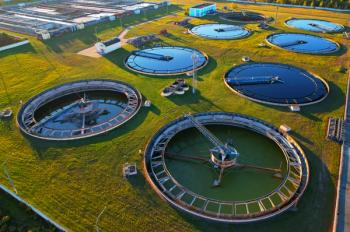
LCGC Europe eNews
- LCGC Europe eNews-05-01-2014
- Volume 0
- Issue 0
Steroid Analysis Without Derivatization
Steroid testing is commonly associated with sports doping testing to monitor athletes for performance-enhancing compounds, but it also important in the food industry for consumer safety. A new method using high-temperature liquid chromatography with photodiode detection and isotope ratio mass spectrometry (HT?LC?PDA?IRMS) that does not require sample derivatization and uses water as the eluent has been developed by scientists at the University of Duisberg-Essen in Essen, Germany.1
Steroid testing is commonly associated with sports doping testing to monitor athletes for performance-enhancing compounds, but it also important in the food industry for consumer safety. A new method using high-temperature liquid chromatography with photodiode detection and isotope ratio mass spectrometry (HT–LC–PDA–IRMS) that does not require sample derivatization and uses water as the eluent has been developed by scientists at the University of Duisberg-Essen in Essen, Germany.1
An LC–IRMS coupling on the basis of a chemical combustion interface was commercialized in 2004. Corresponding author Maik A. Jochmann told LCGC: “In this interface, carbon-containing substances in the LC effluent are chemically oxidized to carbon dioxide. The developed carbon dioxide is then separated by a membrane separation unit into a dry helium gas stream, further dried, and transferred into the IRMS.The main problem is that the LC separation has to be accomplished with water as eluent. Thus, the method is restricted to ion chromatography or separations with mixed-mode phases.”
Together with the Institute of Energy and Environmental Technology (an institute associated with the University of Duisberg‑Essen), Jochmann and his colleagues developed the method based on high-temperature HPLC to differentiate between synthetic and natural caffeine. Jochmann said: “With this work, the scope of LC–IRMS applications has been extended to relatively nonpolar compounds that still require a derivatization if measured by GC–IRMS.”
A mixture of 19-norandrosterone, testosterone, epitestosterone, androsterone, and 5β-pregnane-3α,17α,20α-triol was separated using a C4 column, and water as eluent. The method was then applied to the analysis of a pharmaceutical gel containing testosterone. Jochmann said: “The most important result is that with this method no derivatization of testosterone found in pharmaceutical preparations is necessary for carbon stable isotope analysis. For other matrices, such as urine, the main challenge will be the sample cleanup before the chromatographic separation.”
When asked by LCGC about future work, Jochmann said: “Currently, we mainly work on the compound-specific analysis of pesticides by LC–IRMS. Here we think that the method has a high potential to quantify and elucidate biodegradation processes of such compounds in the environment.” — B.D.
Reference
1. L. Zhang et al., Analytical Chemistry86, 2297–2302 (2014).
Articles in this issue
Newsletter
Join the global community of analytical scientists who trust LCGC for insights on the latest techniques, trends, and expert solutions in chromatography.





